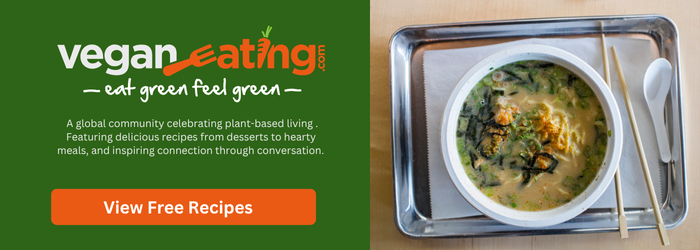As veganism continues to grow in popularity, one common question people often ask is whether adopting a vegan diet is more expensive than a traditional diet. It’s a reasonable concern—after all, specialty plant-based products can come with a higher price tag. But is this extra cost unavoidable, or can veganism be affordable with some thoughtful choices? Let’s examine the factors that can influence the cost of a vegan diet and explore practical tips for maintaining a plant-based lifestyle without breaking the bank.
Comparing Plant-Based and Animal-Based Foods
One of the first steps in determining the cost of veganism is comparing the prices of plant-based foods with those of animal-based products. Basic staples in a vegan diet—such as grains, legumes, fruits, and vegetables—tend to be some of the most affordable options in the grocery store. For instance, a pound of lentils, a plant-based protein powerhouse, costs a fraction of what you’d spend on equivalent amounts of meat. Research from Nutrition also indicates that plant-based diets can be up to 20-25% cheaper than diets that include animal products, primarily when meals are centred around whole foods.
Specialty vegan products, on the other hand, are often where the expenses add up. Packaged vegan cheeses, meat substitutes, and dairy-free snacks can sometimes cost more than their non-vegan counterparts, largely due to the production and ingredient sourcing involved. However, it’s worth noting that these items are not essential for a healthy vegan diet and are often more of a convenience or occasional treat rather than a staple.

Affordable Vegan Staples: Building a Budget-Friendly Diet
When focusing on a whole-food, plant-based diet, many nutritious options are incredibly affordable. Staples like rice, beans, oats, potatoes, and seasonal vegetables are not only budget-friendly but also provide essential nutrients for overall health. Additionally, these foods are versatile, allowing for a variety of recipes without the need for expensive ingredients.
Incorporating grains and legumes is particularly beneficial from a cost-saving standpoint. According to a research study, diets rich in whole grains and legumes are not only economically viable but also associated with numerous health benefits, such as lower risks of chronic diseases. By purchasing these items in bulk, you can save even more and make veganism highly affordable.
The Impact of Location and Seasonality on Cost
The cost of a vegan diet can vary significantly depending on your location and access to affordable fresh produce. In urban areas with a range of grocery stores and farmers’ markets, finding budget-friendly vegan staples is usually straightforward. However, in rural or remote areas, fresh produce may be more limited, impacting both availability and price.
Buying in-season fruits and vegetables can also help manage costs. Seasonal produce is often fresher, more nutrient-dense, and significantly less expensive than out-of-season options. For example, summer months may bring lower prices on berries, tomatoes, and zucchini, while winter offers more affordable prices on root vegetables and citrus fruits. A report by the USDA indicates that seasonally grown produce costs 10-20% less than items grown out of season, offering a simple way to make veganism more affordable throughout the year.
Planning and Cooking at Home: A Key to Affordability
Eating out or purchasing pre-made vegan meals can be expensive, especially if you frequently dine at trendy vegan restaurants or purchase prepared meals from the grocery store. Cooking at home, on the other hand, allows you to control ingredients and portion sizes, which can lead to substantial savings over time.
Meal planning and batch cooking are effective ways to make veganism more affordable. By preparing meals in advance, you can reduce food waste and ensure you’re not overspending on last-minute, convenience-based purchases. A study published in the journal Appetite shows that home-cooked meals not only tend to be cheaper but are also associated with healthier eating patterns, as they typically include more nutrient-dense ingredients and less processed foods.

FAQs About the Cost of a Vegan Diet
-
Is it cheaper to be vegan or vegetarian?
-
How can I save money on a vegan diet?
-
Are vegan supplements necessary, and do they add to the cost?
Both vegan and vegetarian diets can be cost-effective, especially if they focus on whole foods rather than specialty products. However, a vegan diet may be more affordable if it primarily relies on grains, legumes, and seasonal vegetables. Avoiding dairy products, which can sometimes be costly, may actually reduce overall expenses in a vegan diet.
To save money on a vegan diet, focus on whole, unprocessed foods like beans, grains, and vegetables. Buying in bulk, cooking at home, and shopping seasonally are also effective ways to reduce costs. Additionally, consider preparing meals in batches and freezing them to reduce food waste.
While some vegans may benefit from supplements, such as vitamin B12 or vitamin D, they’re generally affordable and don’t significantly add to the overall cost. Many supplements are only required in small amounts and can last several months. Vitamin B12, for example, can often be found for less than $10 for a supply that lasts several months, making it an affordable addition to a vegan diet.
Final Thoughts
Veganism doesn’t have to be expensive. By focusing on affordable staples, cooking at home, and shopping strategically, it’s entirely possible to maintain a balanced, plant-based diet on a budget. Specialty vegan products can be enjoyable additions but aren’t necessary for a nutritious lifestyle. With mindful choices and a bit of planning, veganism can be just as affordable as, if not more affordable than, a traditional diet, allowing you to align your budget with your ethical and health values.



Health | No Comments » on Is Veganism Really Expensive? Breaking Down the Costs